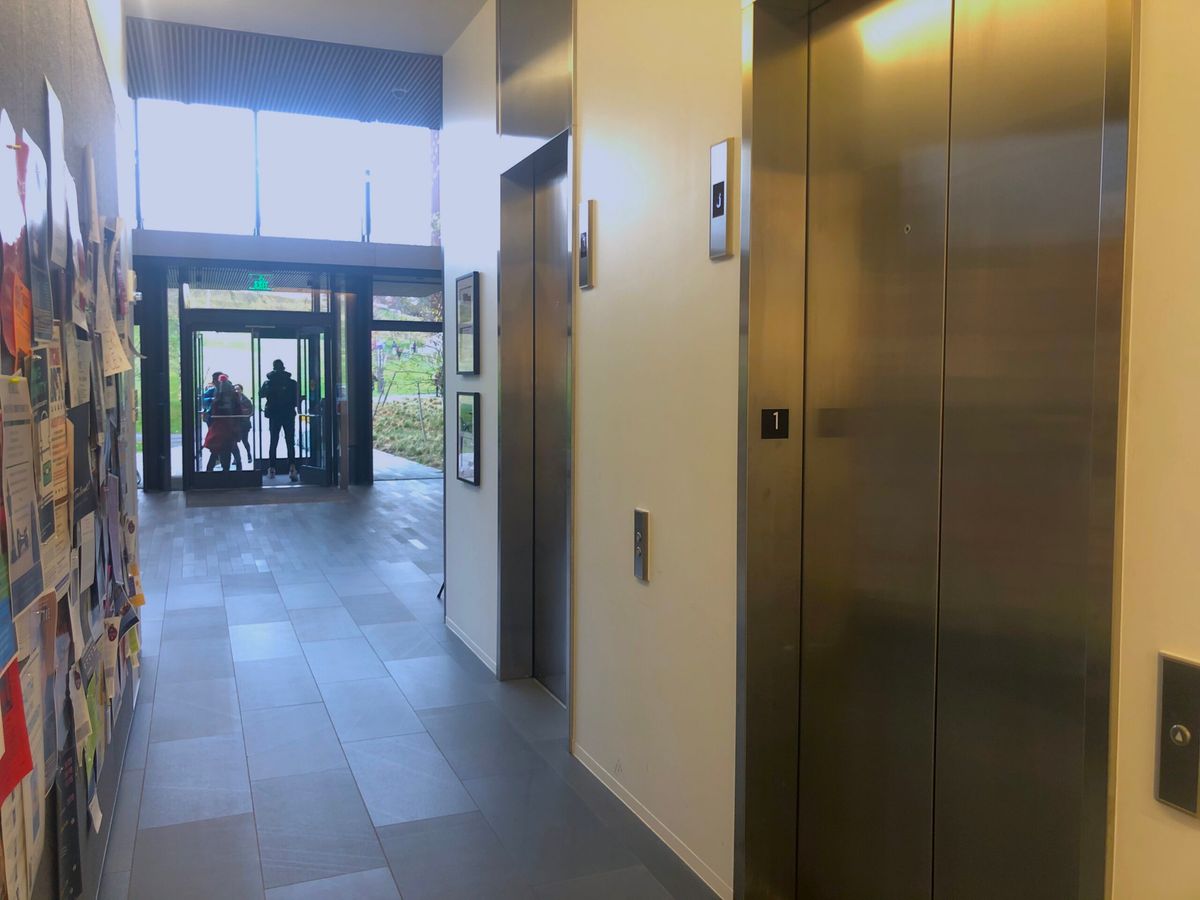Campus Buildings Face Accessibility Concerns

The college is set to make new changes geared toward increased accessibility on campus, including: the creation of an online form for reporting barriers preventing accessibility, the addition of a staff member to the Office of Accessibility Services, increased signage across campus and updates to the online campus map, according to a draft of President Biddy Martin’s email announcement obtained by The Student.
Martin also highlighted the repavement of walkways and streets near during the summer of 2019 as a reflection of addressing accessibility needs. In the spring 2020 semester, the college will form an ad hoc advisory group to consider changes that will make the Science Center more accessible.
Last November, Martin invited students to participate in two accessibility surveys — the Facilities Accessibility Survey and the Climate, Culture and Accessibility: Individuals with Disabilities (CCAID) survey. Near the end of the spring 2019 semester, Martin released the executive summaries of two studies made by consultant groups, which used data from student responses as well as information gathered from a “three-day on-site visit, follow-up interviews, stakeholder input and a review of documents and websites” to issue recommendations for increasing accessibility on campus. Roughly 25 percent of Amherst students identify as disabled, the CCAID survey says.
The Americans with Disabilities Act (ADA), passed in 1990, mandates that the college provide working accomodations for faculty and staff members with disabilities — it’s one of the primary reasons the college sent out the surveys. Both the campus’ hilly terrain and the age of many on-campus buildings pose challenges to accessibility.
One recommendation from Drummond and Woodsum law firm, one of the consultants, is to create an ADA leadership position which would oversee “all disability-related matters campus-wide. The role would extend beyond the student accommodation experience to include the other areas outlined below including employees and visitors with disabilities,” the CCAID study states.
The college has also embarked on a search process for a position that “[guides] decision-making and [coordinates the college’s] responses on all aspects of accessibility across divisions,” according to Martin’s announcement. Last month, the college hired accessibility services specialist Precious Parham to work in the Office of Accessibility Services with Director of Accessibility Services Jodi Foley. Parham declined to comment on her new position, referring The Student to Foley. The Student reached out to Foley, who did not respond by press time.
Martin’s statement, however, did not touch on other recommendations from the CCAID study, such as the creation of a testing center for students with accommodations surrounding exams.
“We strongly encourage the campus to explore creating a testing center that would alleviate many of the burdens placed on students, the registrar’s office and faculty to arrange for and implement accommodated testing,” the CCAID study said.
According to building floor plans and specifications available on the college website, academic buildings such as Chapin Hall, the location of many religion and history classes, Barrett Hall, where parts of the French, German and Spanish departments are housed, and the Octagon, which hosts philosophy classes, have not been officially renovated since their initial construction in 1958, 1859 and 1848, respectively. None of the three buildings contain elevators. The Octagon does not have a ramp for entry to the first floor, and there are no bathrooms on the first floor of Chapin Hall.
Even recent additions to the campus such as the Science Center originally “[lacked] automatic door openers at any entry,” the CCAID study found.
Automatic door openers have since been added to the west-facing entrance of the Science Center. The north and south entrances still lack automatic door openers.
One tour guide has found other issues with accessibility across campus, particularly in the Science Center. “We have a reputation as a campus that is very hilly and hard to get around,” Sunghoon Kwak ’22 said, noting that it’s nearly impossible to travel the campus without using stairs. “If you take stairs out of the picture, I don’t know how I would do my tours.”
Finding the right paths to take around campus when there is a physically disabled person in the tour group is difficult, he added. “I had a tour which I adjusted to make it wheelchair accessible for a prospective student,” Kwak said.
“Usually, tours last between an hour to an hour and 10 minutes. This tour, though, lasted an hour and a half. It is difficult to find ramps and non-hilly areas to get through.”
Due to the college’s layout, tour guides have created alternate routes, avoiding the abundance of stairways and steep hills, to show the campus to prospective students. “We have to cut out a lot of spots,” Kwak said. “On these tours, we don’t go into Val[entine Dining Hall]. We go down the hill near Barrett Hall toward Keefe Campus Center and just point out Val.”
In her announcement, Martin asked students, staff and faculty to continue the shared work of increasing accessibility. “I deeply appreciate this community’s shared commitment to a culture and an environment in which everyone can flourish,” Martin wrote. “Aware of the long distance we still have to travel, I am thankful to you for your partnership as we continue to make progress.”





Comments ()